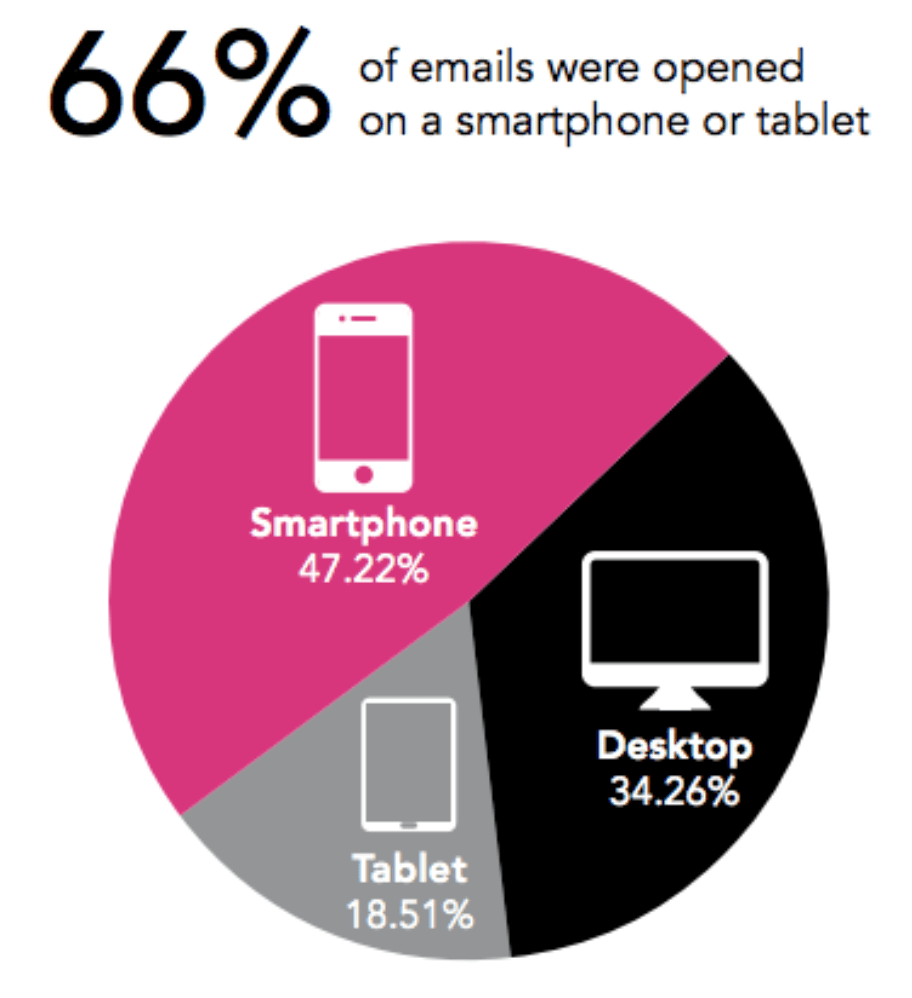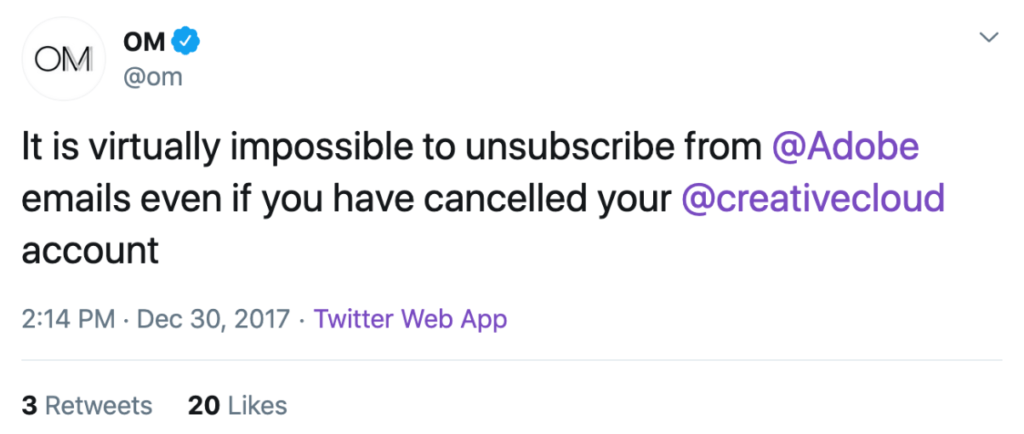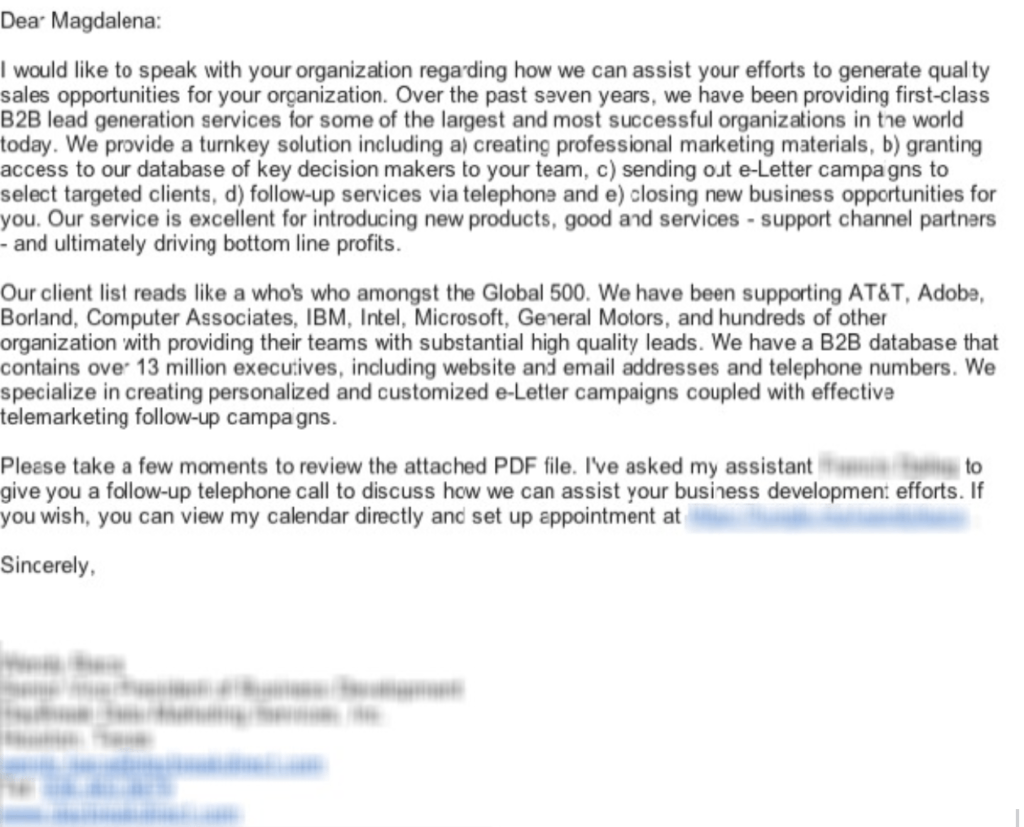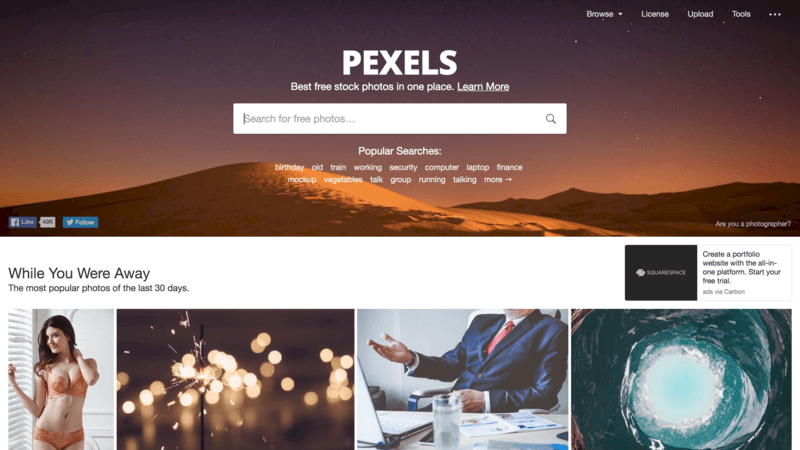Article's Content
Let me guess; your inbox is filled with emails that do little besides giving you another task to do at lunch or on your way to work. So what do you typically do?
Delete, delete, delete…


But once in a while, one of these emails catches your attention.
You open it. Read it. Click the link. Share it. Forward the email to a friend…
Email marketing is one of the best tactics for a brand. According to the Direct Marketing Association, email marketing, on average, sees a 4300% ROI for brands in the United States. This is because email marketing is simple to manage and allows direct communication between prospects and customers.
Social media has changed how we market, but don’t get fooled! Email marketing is affordable, persuasive & captivating and can get you great results with your traffic and B2B eCommerce. Plus, there’s a host of options when it comes to email marketing software for ecommerce, so finding one that works best for your needs should be easy.
So which one has the better ROI?
Email, as it produces a very high ROI – $44 for every $1 spent.
And you’re wondering what’s the ROI for social media? Sadly, there isn’t a good way to monitor this. While one company may have a way that works, another one might look at it differently, making comparisons between the two pointless.
Therefore, 59% of B2B marketers say email is their most reliable channel in terms of revenue generation.
Throughout the many tools, email is the one that addresses engagement in one shot. But every email campaign does not accomplish the level of success that a marketer hopes to achieve.
Despite the widespread opportunity email presents, there is still room for improvement.
That’s why, in this post, we’re sharing 20 email marketing tips that you can apply to your marketing strategy.
Let’s dive right in!
1. Personalize It
Email marketing works well when you create a unique experience for your prospects and customers. Wherever possible, add a personal element to your emails! Most email deliverability tools allow you to add shortcodes that will be replaced with the recipient’s name when the email is sent out.
Email marketing strategist, Val Geisler, says, “the most effective emails come when written from human to human. Of course, you’re human, so what do I mean?! Too many marketers write emails to their list, forgetting that there’s a person on the other side of that computer screen reading what you write. So write your emails as you might talk to a friend. put a friend’s name at the top of your draft copy and think about how you might tell them what you’re writing about.”
By using the power of personalization, you make others feel “special,” which can motivate them to read more or do business with you. According to Campaign Monitor, emails that have a personalized subject line, have a 26% more chance to be opened when compared to emails that have a generic subject line.
If you have access to your recipient’s name, it makes sense to incorporate it in the subject line and the body of the email. Another trick is to ask relevant questions in the email to give a personalized look.
By offering a personalized message, B2B brands have an opportunity to put themselves out there in a competitive world of B2B.
Although not required, another great way to connect with people in your emails is to include your photo in your email signature to help them feel like they’re talking to a real human.
2. Build Your Own Email List
An email list is one of the critical aspects of a successful email marketing strategy. With this list, you tell your story, promote your B2B brand and showcase your products and services, all while trying to persuade subscribers into becoming customers.
Email lists can take time to build, and you might be tempted to buy an email list to get started. But please don’t do this! Building your own list using an email finder is one of the smartest things you can do for your B2B brand. When you create your own, you’re going to end up with a great list. Plus, it’s free!
An email list with invalid or closed emails can lead to a loss in deliverability. It is important to use an email verification tool to reduce bounce rate and to improve sender’s reputation and score.
One of the easiest ways to build your list is placing a form on your website, which can help encourage email sign-ups from visitors. This acquisition practice is not only beneficial but easy to incorporate.
But if you want to use this method, you should keep the look of the sign-up box simple, as it makes it easier on the eyes. You also want to try to place it as part of the top banner, or just below, to make it easier to find.
Mailchimp and ConvertKit are two popular choices for email marketing, and ConverKit is a great choice for those just getting started.
Digital Marketing Expert, Pat Flynn, says, “having an email list means you can always take your audience with you. Some people even build their entire businesses off of email marketing alone, which shows you how powerful it can be.”
If you learn the basics of attracting others through great content and your website, you’ll be on your way to growing your email list and your brand!
3. Experiment with Emojis
As you know, emojis have grown and evolved over the years. They have gained lots of attention in both personal and professional communication.
Marketers are increasingly embracing emoji’s, especially since they’re an easier way to communicate. By using emojis, marketers have opened the door to connect with their audience. Engagement is crucial when it comes to marketing! Those who feel unengaged can trash your emails or unsubscribe.
Incorporating emojis into your email marketing strategy can give your brand personality and uniqueness. And strengthening your brand’s image can help boost awareness and overall engagement.
According to Campaign Monitor, they’ve seen a rise in emojis and, if used appropriately, they can add a nice touch to your inbox! Businesses that are using emojis in the subject line have seen a 56% increase in their unique open rates.
If you want to start incorporating them into your subject line, one to three emojis are suggested.
4. Make it Mobile-friendly
What’s the first thing you do when you wake up in the morning? Most check their cell phones.
Thus, 66% of emails opened occur on smartphones or tablets. If your emails aren’t mobile-friendly, you could be missing out on the chance to engage subscribers and create results.


Users have come to expect their emails to be mobile-friendly. A study from Adestra found that if an email is not mobile-friendly, it is most likely to go to the trash in under three seconds. To add to that, 15% of mobile users will unsubscribe altogether if an email is not mobile-friendly, rather than simply deleting it.
Yikes…
And put your hand up if you have opened an email on your phone and the text looks funny and scrolling was just a challenge.
Exactly!
You don’t want your subscribers to get a headache when they read your emails, do you? Of course not!
That said, you want the content to display nicely across all phones.
When writing mobile-friendly content, it’s essential to keep it short and sweet. Create short and consumable chunks of content (e.g. short paragraphs) that make it easy for others to read your copy and understand the action they should take.
Creating more mobile-friendly content puts the brand in touch with subscribers directly. You should also view email as the two-way communication it was intended to be. With this, you’ll be on your way to seeing more opens, click-through-rates and conversions.
5. Make it Easy to Unsubscribe
Wait—make it easier to unsubscribe?
That’s right.
It happens to everybody.
It could be due to an overwhelming amount of emails. Or they never meant to subscribe to your content in the first place...
If someone wants to unsubscribe, you making it tedious and difficult to do so isn’t going to all of a sudden change their mind completely. If anything, it’s just going to result in them putting you on blast all across Twitter…


Make it easy for subscribers to unsubscribe from your emails and let them control their subscriptions with an “unsubscribe” or “manage subscription” option at the end of the footer.
Generally, an unsubscribe rate below 0.5% is a reasonable rate for an email campaign, but anything above 0.5% means you should reconsider your strategy.
It is crucial to make it simple for others to manage their emails. Users can get annoyed and relate this feeling towards your business if they find it challenging to unsubscribe. If your subscribers can’t opt-out, they will mark your content as spam.
Giving users the option to manage their subscription allows them the chance to opt down rather than completely out, as it still keeps your subscribers, but on their terms.
The opt down option is like a preference center, that allows subscribers to decide how regularly they want to receive emails. And it’s a good way to know subscribers, because they will only get messages that are important to them.
6. Promote Social Sharing
Did you know there are ways to incorporate your social media into your email marketing strategy?
Consider them like peanut butter and jelly!
You can utilize social media to grow your email list by either posting something to your followers or running an ad with a sign-up form.
Many emails include social icons in the footer that allows others to see your social channels.
You should also design your content so your subscribers can share a version of your message across social media. By doing this, it will enable you to get more exposure and boost engagement with your audience.
While you’re at it, you may want to consider adding social media share buttons to your website to grow your audience even further!
Email marketing remains a vital tool when it comes to customer acquisition and lead generation. However, if you want to gain marketing opportunities and take your business to the next level, you should consider incorporating social media into your email campaigns!


7. Utilize User-Generated Content
An excellent way to create further engagement with your email campaigns is to ask your consumers to share user-generated content, or UGC for short.
This tactic allows subscribers an opportunity to interact with your business, but also encourages them to make purchases from you or to visit your website.
User-generated campaigns have shown to be 20% more potent on purchasing decisions than other types of media, all with the ability to increase engagement.
An example of a B2B brand taking advantage of UGC is Buffer. Buffer consistently curates photos from their community to show how others live their daily lives, while also encouraging their followers for engagement.
https://www.instagram.com/p/Bz83BUSnzwx/
So go ahead and give it a go! It’s a great way to get your feet wet!
8. Keep Emails Concise
People typically like short and concise emails better than long ones as they get to the point faster. Plus, when readers scan through your email, they’re likely to find the overall message before taking action!
And being concise is what you should do as a B2B brand if you want anybody to read your content. Your prospects and customers are busy. They don’t have time to read a novel-length email about your blog, your product(s), or services, so keep it nice and short.


But if you’re struggling, try setting a limit. By having your emails short, you will spend less time writing and more time on other work. That said, writing is a skill. With all skills, you have to practice.
It might take just as long to write short emails. But, you’ll help your prospects and customers be more productive because you will be adding less clutter to their inboxes.
9. Reel ‘Em in with the Subject Line
If you want to do email marketing right, the best place to get started is with your subject line. Your subject line is your first (and possibly your last) impression on subscribers.
Essentially, your subject line is more important than the email itself. And we all know a good newsletter is pointless if it never sees the light of day.
Online Marketing Expert, Amy Porterfield says, “don’t underestimate the power of this one simple sentence. As I’ve mentioned in the past, email marketing is the most effective means of online marketing. The gateway to that email—the first thing your customers see—is your subject line. It has to contain hints of everything your email has to offer. It has to convey not only your knowledge and authority but also your empathy for your audience’s needs.”
So, keep the subject line short, simple, fun, and relevant to the content in your email. Use action words to evoke interest, emotion, and curiosity to encourage opens.
You’ll need to do some testing to determine the best length for your customer and prospect base. It is suggested that 41 characters or seven words are the right length for an email subject line.


And if your emails aren’t getting opened, your subject line needs work.
10. Crush the Preview Text
Once your email lands in a mailbox, the critical thing is grabbing the recipient’s attention that encourages them to open the email.
You’re probably focusing energy and time on the subject line to accomplish this. However, did you know the subject line isn’t always the way to grab somebody’s attention?
It’s the preview text. It’s a piece of writing that helps convince others to open your email.
And I know I just the subject line is KEY to getting your emails opened – but think of the preview text like a subheading. Once the subject line catches their eye, this is where you really can start to reel them in.
Usually, they’re 50 to 100 characters or 6 to 11 words. However, they can appear differently depending on what device or email service (e.g. Gmail) they opened on.
Most email marketers don’t take advantage of the preview text. They end up spending their energy and time creating the best subject line, before thinking about the preview text. So, they leave it blank or include some basic information.


Using a preview text in your email offer more context to what the email is about and encourage more opens from subscribers.
11. Don’t Shout
Avoid all caps and numerous exclamation marks in the subject line and body of the email. Not only are all caps the equivalent of yelling online, but is rude and not professional.
Using all caps is an easy way to trigger the spam filters. And, if your email gets through, it’s annoying and may be considered unprofessional.
It’s good to be excited about your product or service. But it doesn’t mean you have to yell at your prospects or customers to get their attention.
Using all caps should be used for a short string of text rather than full sentences. An excellent way to emphasize a word or a sentence is to use italics or bold to set off the text.


12. Include a Call to Action
When creating an email marketing campaign, one of the critical components is the call to action (or CTA for short).
A call to action grabs a subscriber’s attention and encourages them to act. These simple actions have a way of changing an email. They usually consist of a button or a hyperlinked line of text that directs a user to a B2B brand’s website.
Joanna Wiebe of CopyHackers says “stop giving flimsy excuses for your lack of an effective call-to-action. Now’s the time to focus visitors on simple and effective decisions that will boost conversions and establish you as an authority.”
If you choose to use a CTA, it’s recommended you place it “above the fold.” It means your subscribers should see it without having to scroll through the whole message.
According to Instapage, placing the CTA above the fold does wonders for email campaigns. This is because the placement gets your subscribers attention. By doing this, it allows others to click early, engages readers and prevents them from ignoring it.
To get better at crafting call-to-actions, make sure to browse examples of email flows for inspiration. We can discuss tips, strategies, and best practices all day, but in the end, the only way to fire up ideas and get the juices flowing is to take inspiration from others.
13. Get to Know Your Audience
Understanding your audience is an essential step in implementing any email marketing strategy. If you want your email to resonate with others, it needs to target their preferences. Knowing who your audience is can help you understand what things they want out of your business.
But here’s a clue before you continue, your target audience is not everyone.
So, how do you figure out who is your audience?
Here are some ways to help you discover your target audience:
- What’s your core offering to customers?
- Who would benefit most from what you have to offer?
- What are the primary pain points you address?
- What makes you, and your business, unique?
Once you discover who your audience is, it will be easy to write copy that will make them want to open, click and learn more.
14. Choose the Right Words
When you’re writing copy for email, leveraging the right words to create results is a must. But with a variety of words at your fingertips, how do you know what words will have the most significant impact and where to use them?
Though your choice of topic is essential, the words you use in your content will decide who reads your email and who ignores it.


The selection of words will have an impact on how the tone is interpreted. Text that is inspiring is a good way to shape the tone that aims to draw in the reader.
And using negative language is a bad way of convincing others to avoid your email altogether.
Proper use of descriptive words (e.g. adjectives) can have a significant effect on your copy’s tone. While you’re in the editing stage, pay close attention to analyzing the language. You want to ensure that you consistently use the right tone.
An example of great words to use is P.S. Copywriter, Joel Klettke, who says he’s “… a big fan of never wasting a chance for a “P.S.” section. While younger generations aren’t all that familiar with paper mail, there are huge swaths of people that grew up understanding that the juiciest, most critical information in a letter was in the “P.S..” I make use of that heuristic and use the “P.S.” to call attention to compelling reasons to take action, restate my offer, offer a critical piece of proof – or anything else I want to make SURE my audience will see.”
Use a search engine, a dictionary, or thesaurus for help, but it’s essential to make sure they fit with the message you’re trying to send.
15. Take Advantage of White Space
Whitespace is your best friend and you should depend on it to make you successful.
Numerous amounts of whitespace – gaps between text and images – are appearing more and more on emails. In other words, you need to keep your paragraphs brief, incorporate subheadings and use bullet points wherever possible, along with any key facts.
Adding white space around the elements of your email allows for click-throughs and easier reading by separating them visually from other components in there.
It also helps increase the legibility of the text and helps the eyes’ ability to scan the content.
And when you’re writing your email, make sure the copy and your CTA are separated, but still stand out so that your readers know they’re connected.
16. Send Consistent and Regular Emails
We all have the same question: how often should we send our email campaigns?
With the right frequency, it can have a large impact on your success.
According to the DMA UK, brands send emails:
- Once a Month: 18% (B2B), 3% (B2C)
- 2-3 Times a Month: 37% for both B2B and B2C
- 4-5 Times Month: 25% (B2B), 30% (B2C)
- 6-8 Time a Month: 7% (B2B), 11% (B2C)
- More Than 8 Times a Month: 5% (B2B), 14% (B2C)
- Unsure (???): 7% (B2B), 5% (B2C)
So, for B2B you should be sending one email a month. But no more than five. Adjust your approach and adjust according to your success.
Have a look at your competitors, and see how many they are sending. But don’t just blindly copy their strategy. They may be sending more emails because they have a large number of subscribers or they might have a specific goal. Your plan should focus on your needs and what you want to accomplish.
Moreover, it’s key to understand the basics of engagement. If you have low engagement, you might improve it by reducing or increasing the number of emails you send.
And not all messages are sent with buying intent. Some emails are sent to inspire or captivate. You just need to make sure it adds value before hitting “send”. To make informed decisions about your email campaigns, using an email analytics tool can be invaluable. These tools provide valuable insights into your campaign performance, allowing you to measure engagement metrics and track the effectiveness of your emails, enabling you to make data-driven decisions and optimize your email strategy accordingly.
17. Always Send Test Emails
You can spend a lot of time and energy on creating an email, only to find out that the email doesn’t look so pleasant to your subscribers.
It’s an issue all email marketers face. Every email client (e.g. Gmail & Outlook) displays HTML email differently, so your emails may not look the same for each of your subscribers.
When faced with these issues, you ask yourself: Why did this happen; it looks fine on my coworker’s computer? You and your coworker were probably using the same email client, most likely your subscribers are opening your content in different email clients.
However, every email deserves to be tested before every launch, not only to test how it looks, but also to give you some peace of mind.
Email clients can alter too. They can update without notice, adding or removing HTML support, and change how an email appears in the inbox. And without testing, you will never know!
18. Pick the Right Time to Send
Timing is everything. It certainly matters, especially when it comes to getting others to notice and open your emails.
Research from OptinMonster found that there is no perfect time to send emails. Every email list is made up of different people with different habits and time zones. So, your best time may or may not be the same as other marketer’s best sending time!
But, timing comes down to your own audience. As such, other timing studies run by CoSchedule and Wordstream found the best times are between 10 to 11 A.M. or 1 to 3 P.M.
After your email is received, have a peek at your open rates. It depends on what sector you’re in, but the average is 22.87%.
Ultimately, finding the best time to send emails depends on your subscriber’s habits.
Experiment to find out the optimal time that works for you. It will take some time, although it will be worth it when your open rates are high.
19. Be Cautious About Using Images and Video
Visual media is known to be more engaging than words. So your email is likely to do better if you use images or videos to illustrate your message. But, you should be cautious when using the two, as not all email providers display visuals by default and they might be restricted.
Every visual in your email should show your values and purpose as a B2B brand. Look for ways to incorporate your brand’s colors and logo, so your subscribers can think of your business. For example, have you noticed that some brands have their logos next to their email in your inbox? Brand Indicators for Message Identification (BIMI) is gaining popularity in email messaging because it draws subscribers’ attention, helps build brand credibility, and improves opening rates.
There are also great tools you can use to find professional stock images like Pexels or Unsplash that won’t harm your brand.


Do you know how many images to include in your message? Constant Contact surveyed over 2 million customer emails to find out if there was a link between the number of images used and engagement. They found emails with less than three images and 20 lines of text resulted in higher click-through rates.
Use these tips to craft emails that standout! Don’t overdo things and don’t use too many visuals. Instead, keep it cheerful and straightforward, but enough to spark interest.
20. Schedule Your Emails
Some people like to create their email campaign when they’re inspired and send it out within seconds of finishing it. There’s no problem with this, but you should know that you can schedule your emails.
Not everybody has a schedule for sending emails, but it can be helpful if you need to collaborate with your team or manage multiple things as an entrepreneur. One thing to keep you on track is to make a content calendar to manage your campaigns and any other projects.
As you craft your email, you’re able to select what day and time you send it. You can also save it as a draft so you can decide not to send it until later on! But, if you have a segmented list, you can copy your email and send it one list at a particular time and another later.
With email scheduling, it keeps you from sending emails late at night or over the weekend. Instead, it will look like you’ve had a productive morning and were able to focus your energy on crafting the perfect email.
Wrapping Up
Email marketing is a strong driver of sales, revenue and engagement for your B2B, and has a larger reach and ROI than any other tool out there.
You have to prove your value to your subscribers. Understand and know your readers so that you can empathize with them. Ask questions. And offer advice.
Write as if you’re emailing your best friend, because that’s how people will like and trust you. And ultimately, keep reading your content.
What tip did you find fascinating? We’d love to hear them in the comments!








